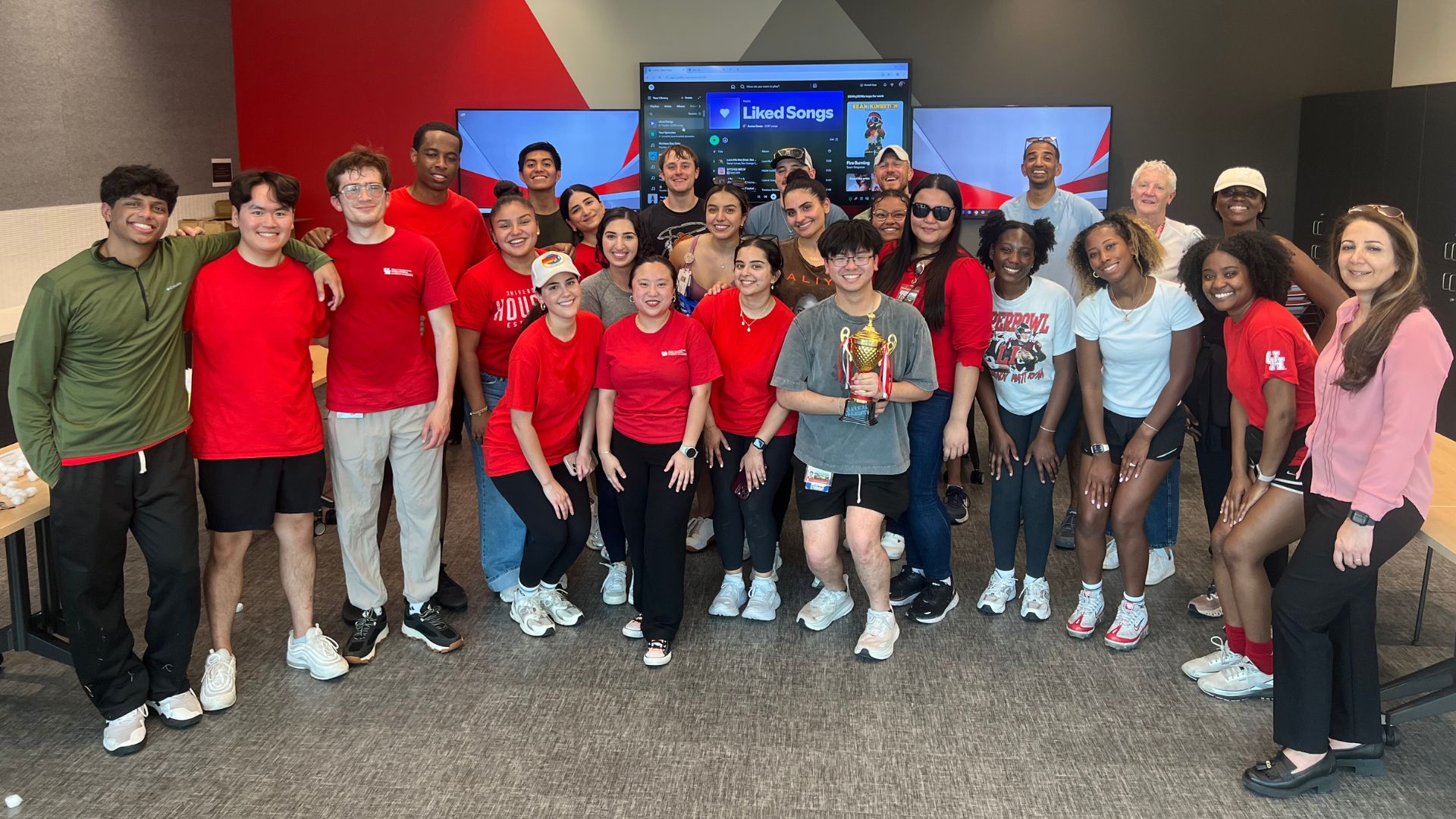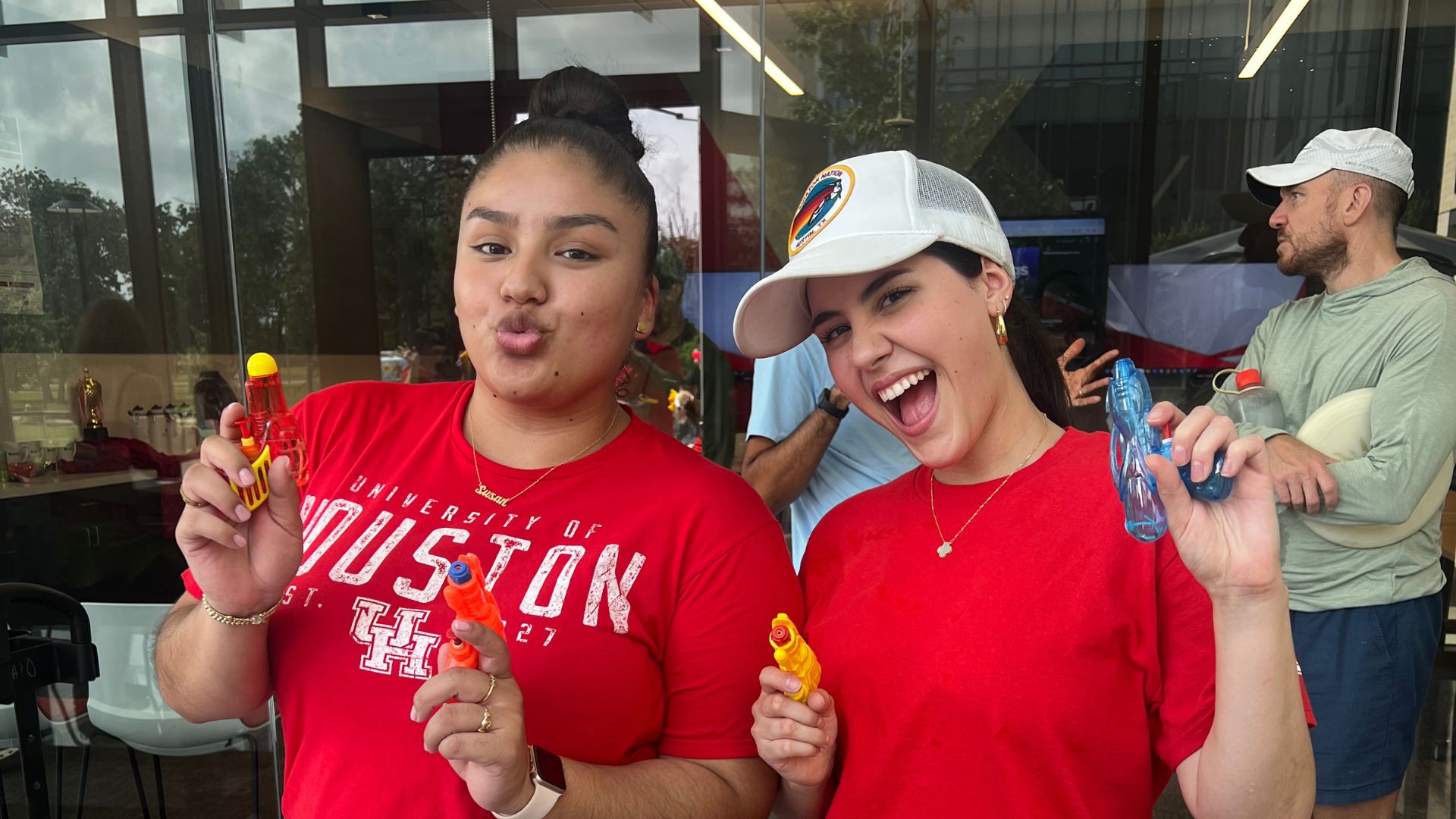 Building Bonds Beyond the Books: Learning Communities at UH College of Medicine
Building Bonds Beyond the Books: Learning Communities at UH College of Medicine
At the Tilman J. Fertitta Family College of Medicine, the rigor of medical school is met with a unique antidote: learning communities. These groups of students, supported by faculty mentors, provide academic, social, and emotional connection throughout the program. What begins as a shared space often grows into something much deeper, a source of friendship, mentorship and resilience.
For Thai Tran, a second-year student, the learning community quickly became a second home. “From early mornings before lecture to late nights after the sun had set, they became a place of peace and snacks,” Tran said. “I wanted to help improve the learning communities for my fellow classmates and make it a safe space that others would enjoy just as much as I did.”
Tran emphasized that nearly everyone participates in some way, whether through structured events or casual meetups. “While a majority of the time we do talk about school, that has allowed us to connect on a level deeper than classmates,” he said. “The learning communities are a unique and positive aspect of our medical school experience.”
A Community Within a Community
For Tia Gordon, a fellow second-year student, the draw was simple: connection. “I chose to participate in it because they provided a sense of community,” she said. “I have gotten a community within a community, making it easier to foster more meaningful friendships.”
Her favorite memories come from Field Day, a highlight of each academic year. “It provided a fun way for us to compete and enjoy the outside,” Gordon recalled. “We have about one planned event a month, but Field Day was especially memorable.”
Farrah Hmaidan, also in her second year, echoed the importance of support. “The workload and challenges can be overwhelming, so having a space for social interaction and peer support is essential,” she said. For her, the communities have been both personally and professionally enriching. “I’ve also gained valuable networking opportunities through interactions with upperclassmen and faculty mentors who provide insights into research, clinical opportunities and extracurricular activities.”
Hmaidan said the variety of activities helps create balance. “They offer study groups, socials with upperclassmen, academic talks and events like Spirit Week and Field Day. The goal is to provide both academic and social support, so we can study together but also unwind and build friendships.”
 The Tradition of Field Day
The Tradition of Field Day
Field Day stands out as a tradition that unites students across all six learning communities. For Tran, the build-up was as exciting as the event itself. “The buzz didn’t really start until Spirit Week,” he said. “From water guns to pie in the face, it was the first time in a while that we saw each other as friends outside the lecture hall. Field Day was the culmination of the hard work and camaraderie we had built throughout the year.”
Hmaidan described the day as “highly anticipated and energizing,” noting the sense of school pride it fosters. “It’s a fantastic opportunity to bond with classmates and build memories.”
Faculty Who Mentor and Support
Behind the student experience are the learning community mentors, faculty who guide students academically and personally.
For Maryam Vasefi, Ph.D., becoming a mentor was about building trust. “Mentorship is about more than giving advice, it’s about building relationships,” she said. “Our goal is to make sure every student has a trusted mentor and a community to lean on, not just for academic support but also for personal and professional development.”
Vasefi sees Field Day as a perfect example of that balance. “It’s a chance to put aside the day-to-day pressures and simply enjoy the spirit of teamwork and friendly competition,” she said. Looking forward, she hopes to expand wellness discussions and peer mentoring opportunities while preserving the traditions that foster pride and identity.
Woods Nash, M.P.H., Ph.D., said his role as a mentor is about encouragement. “We have amazing students, and it’s rewarding to remind them just how capable they are,” he said. “One of my main goals is to listen intently, encourage them and keep them motivated.”
For Nash, the vision is clear: to make the learning communities feel like a home away from home. “We want our learning community spaces, and our relationships with students, to feel like a place where students always feel comfortable and know they are welcome and supported.”
A Lasting Impact
As the learning communities have grown, from three groups at the school’s founding to six today, they have retained their close-knit feel. Students describe them as vital not only for study tips or clinical advice but for building the friendships that carry them through the challenges of medical school.
“The learning communities remind us that while the academic work is important, community, wellness and balance are just as essential,” Vasefi said.
For students like Tran, Gordon, and Hmaidan, the benefits extend far beyond academics. “It’s comforting to know that we’re all navigating this journey together,” Hmaidan said. “The learning communities give us camaraderie, support, and a sense of belonging. They make medical school feel less like a solitary challenge and more like a shared experience.”
At the Fertitta College of Medicine, the message is clear: success in medical school isn’t only about mastering the science, it’s also about building the community that sustains you along the way.